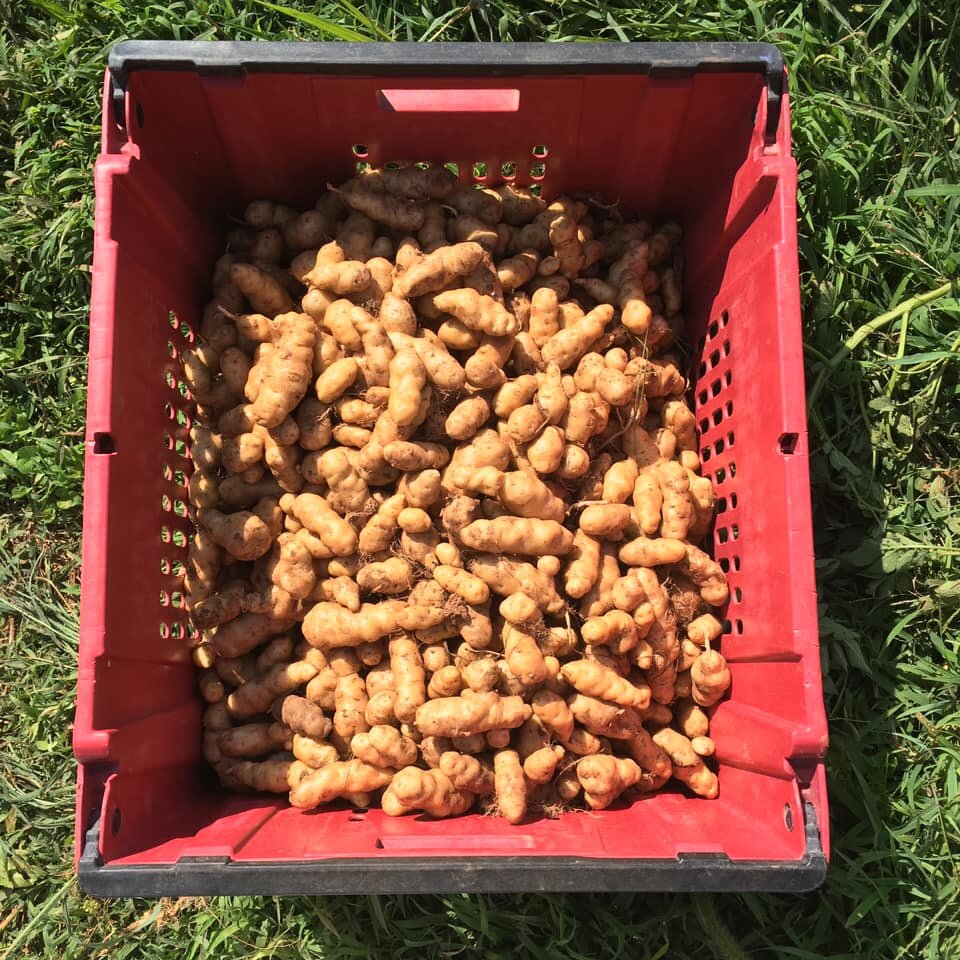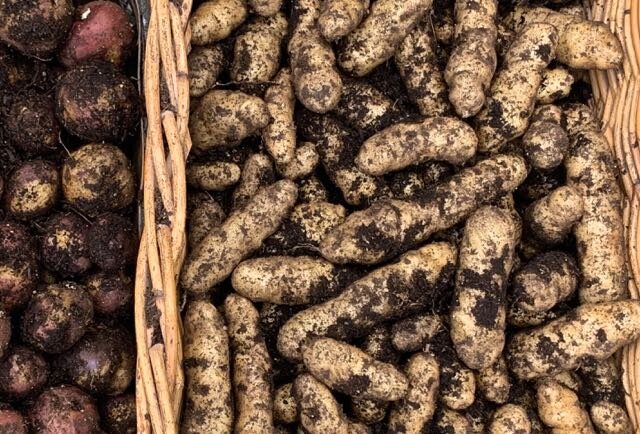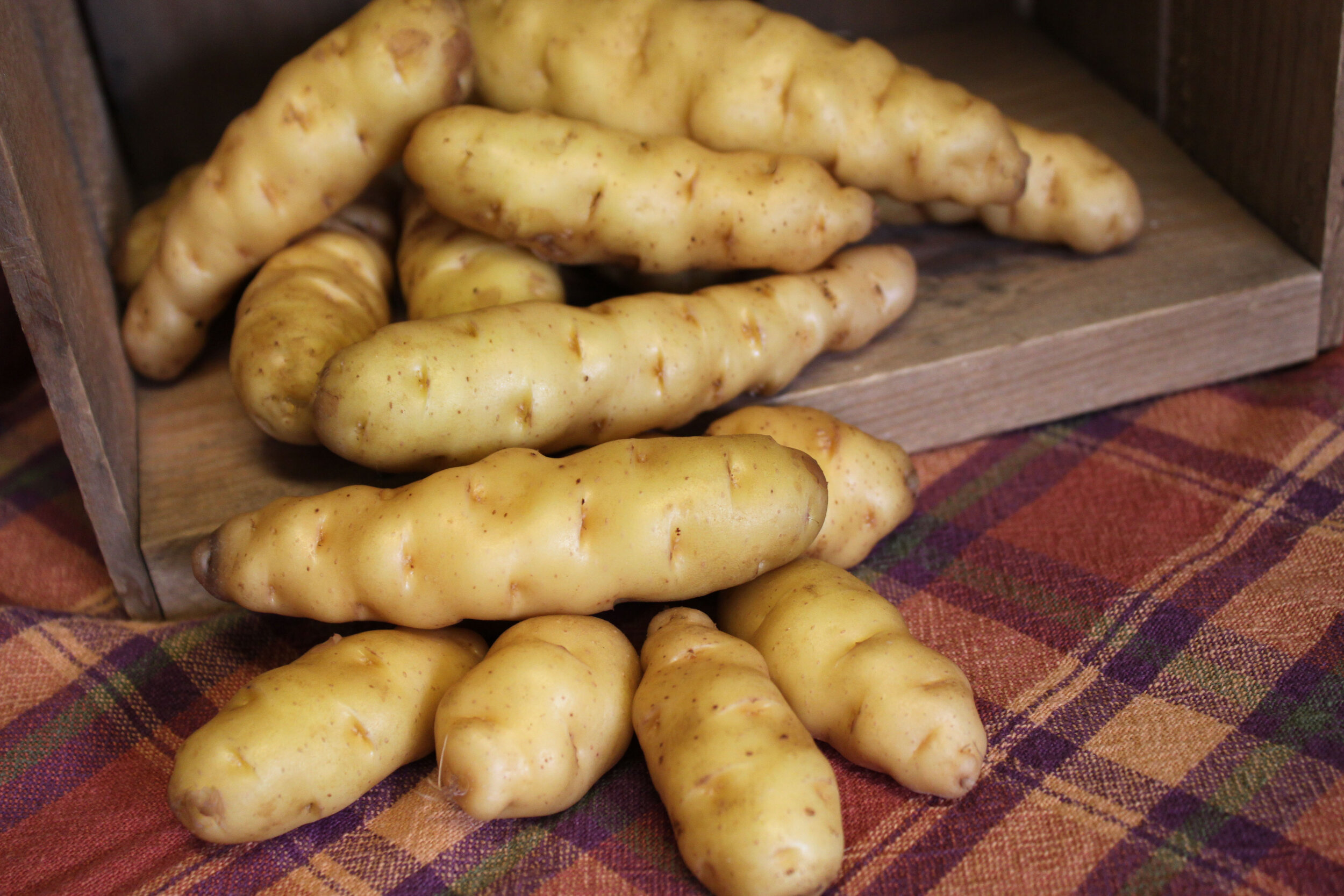Limited Space? Grow Makah Ozettes in a Container
The Makah Ozette potato is a culturally meaningful food connected to the Makah Nation, stewards of the potato for more than 200 years. When we grow and share Makah Ozettes in our communities, we celebrate its cultural history, promote biodiversity and connect with the earth.
The Makah Ozette fingerling has a nutty, earthy flavor and a firm, creamy texture. If you have limited outdoor space or are new to gardening, try growing a few seeds in a container. It’s low-risk, educational and very rewarding.
Optional Seed Prep:
Two to four weeks before planting, prepare the seed potato.
To increase the number of potato plants, cut the seed potato into large segments, making sure there are at least three eyes (elongated dimples) in each piece. Dry the tubers with a clean cloth and allow the cut ends to air-dry for a few days and “callous over” with a protective layer before planting. A light coating of cedar dust can also be used to help dry the cut surfaces.
Although it isn’t necessary, many gardeners like to chit (sprout) their seed potatoes 2-4 weeks before planting. Place a single layer of seeds in an egg carton or shallow cardboard box with the eyes facing up and store in a cool spot outside the refrigerator. When sprouts reach 2-3 inches, the tubers are ready to plant in the garden.
Plant / Grow:
The best time to plant seed potatoes is at least two weeks after the last frost, ideally when soil temperature reaches above 50°.
Begin with a large, empty container — a grow bag, burlap sack, whiskey half-barrel, large pot, etc. Make sure the container has very good drainage; drill extra holes in the bottom if necessary. Place the container in a spot that gets at least 6 hours of full sunlight per day.
Line the bottom of the container with 6 inches of high-quality organic soil blended with a small amount of organic compost. Place seed potatoes on the soil with the eyes facing up, giving each plenty of space to grow. A 20-inch wide container can hold about four seeds; a 29-inch half-barrel does well with 5-6 seeds. Cover tubers with an inch or two of the soil. If the seed potatoes have sprouted, leave 1/2” of the sprout exposed above the soil.
Water consistently throughout the growing process, about 1-2 inches of water per week.
When the potato plants have grown 6 inches, add more soil/compost blend, covering the stalks, leaving 2 of stems exposed above the soil.
Continue adding soil as the plants grow until the top of the container is nearly filled with soil.
Harvest:
Late in the summer, the stalks will turn yellow and die. This is a natural process and means the potatoes are getting ready for harvest. Cut back the stalks to soil level and leave in the container for 10-14 days to toughen up for harvesting. During this process, don’t water much.
It’s not easy in Seattle, but try to harvest the potatoes on a dry day. If the container is not too heavy, tip it onto a tarp to release the potato crop. If the container is too large to tip, carefully scoop out the soil with your hands (as not to damage the potatoes), setting aside the potatoes as you remove the soil from the container.
Tip: Makah Ozettes are prone to disease, especially the small portions left behind from the harvest, so it’s best to be thorough.
If the soil is very wet, air-dry the potatoes in a single layer before storing. Do not leave potatoes in the sun very long or they will development solanine and turn green, which can cause nausea, headaches and neurological problems when eaten.
The potatoes can be eaten anytime after harvesting. But to prepare them for storage, allow the freshly dug potatoes to sit in a dry, cool, dark place for a couple weeks to cure. After curing, brush off any soil clinging to the potatoes. Washing potatoes shortens the storage life.




